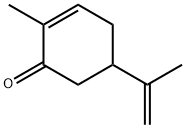Carvacrol
Synonym(s):2-Methyl-5-isopropylphenol, Isothymol, Carvacrol;5-Isopropyl-2-methylphenol
- CAS NO.:499-75-2
- Empirical Formula: C10H14O
- Molecular Weight: 150.22
- MDL number: MFCD00002236
- EINECS: 207-889-6
- SAFETY DATA SHEET (SDS)
- Update Date: 2025-12-19 17:28:17

What is Carvacrol?
Chemical properties
liquid
Chemical properties
Carvacrol has a characteristic pungent, warm odor. The commercial product consists of a mixture of isomers differing because of the position of the isopropyl radical. The odor characteristics differ between the technical (lower grade) and pure (higher grade) commercial products.
Occurrence
Reported found in cumin seed, thyme, oregano, calamus, lovage, myrtle and lemon balm.
The Uses of Carvacrol
Carvacrol is a flavoring agent that is a colorless to pale yellow liquid. it has a spicy and pungent odor, resembling thymol. it is insoluble in water and soluble in alcohol and ether. it is a mixture of the isomeric carvacrols (isopropyl o-creols), and is obtained by chemical synthesis. it is also an ingredient of savory, a fragrant herb in nature.
The Uses of Carvacrol
As disinfectant; in organic syntheses.
The Uses of Carvacrol
Reference Standard in the analysis of herbal medicinal products
Definition
ChEBI: A phenol that is a natural monoterpene derivative of cymene. An inhibitor of bacterial growth, it is used as a food additive. Potent activator of the human ion channels transient receptor potential V3 (TRPV3) and A1 (TRPA1).
Preparation
From p-cymene by sulfonation and subsequent alkali fusion.
Aroma threshold values
Detection at 2.29 ppm.
Taste threshold values
Taste characteristics at 5.0 ppm: spicy, herbal phenolic, medicinal and woody.
Synthesis Reference(s)
Tetrahedron Letters, 19, p. 2545, 1978 DOI: 10.1016/S0040-4039(01)94822-1
General Description
Produced and qualified by HWI pharma services GmbH.
Exact content by quantitative NMR can be found on the certificate.
Flammability and Explosibility
Not classified
Safety Profile
Poison by ingestion, intravenous, and subcutaneous routes. Moderately toxic by skin contact. A severe skin irritant. Combustible liquid. When heated to decomposition it emits acrid smoke and irritating fumes.
Properties of Carvacrol
| Melting point: | 3-4 °C(lit.) |
| Boiling point: | 236-237 °C(lit.) |
| Density | 0.976 g/mL at 20 °C(lit.) |
| vapor pressure | 3.09-6.664Pa at 25℃ |
| refractive index | n |
| FEMA | 2245 | CARVACROL |
| Flash point: | 224 °F |
| storage temp. | -20°C |
| solubility | 1.25g/l |
| form | neat |
| pka | 10.38±0.10(Predicted) |
| form | Liquid |
| color | Colorless to Light orange to Yellow |
| Odor | Penetrating, dry-medicinal (“-phenolic”) - herbaceous odor with a spicy undertone. |
| Water Solubility | Insoluble |
| JECFA Number | 710 |
| Merck | 14,1872 |
| BRN | 1860514 |
| Stability: | Stable. Combustible. Incompatible with strong bases, strong oxidizing agents. |
| CAS DataBase Reference | 499-75-2(CAS DataBase Reference) |
| NIST Chemistry Reference | Phenol, 2-methyl-5-(1-methylethyl)-(499-75-2) |
| EPA Substance Registry System | Isopropyl-o-cresol (499-75-2) |
Safety information for Carvacrol
| Signal word | Danger |
| Pictogram(s) |
 Corrosion Corrosives GHS05  Exclamation Mark Irritant GHS07  Environment GHS09 |
| GHS Hazard Statements |
H302:Acute toxicity,oral H314:Skin corrosion/irritation H411:Hazardous to the aquatic environment, long-term hazard |
| Precautionary Statement Codes |
P270:Do not eat, drink or smoke when using this product. P273:Avoid release to the environment. P280:Wear protective gloves/protective clothing/eye protection/face protection. P301+P312:IF SWALLOWED: call a POISON CENTER or doctor/physician IF you feel unwell. P303+P361+P353:IF ON SKIN (or hair): Remove/Take off Immediately all contaminated clothing. Rinse SKIN with water/shower. P305+P351+P338:IF IN EYES: Rinse cautiously with water for several minutes. Remove contact lenses, if present and easy to do. Continuerinsing. |
Computed Descriptors for Carvacrol
| InChIKey | RECUKUPTGUEGMW-UHFFFAOYSA-N |
New Products
4,4-Difluoropiperidine hydrochloride tert-butyl 9-methoxy-3-azaspiro[5.5]undecane-3-carboxylate Indole Methyl Resin N-Isopropylurea N,N-Dicyclohexylcarbodiimide(DCC) MELDRUMS ACID 5-METHYLISOXAZOLE-4-CARBOXYLIC ACID Magnessium Bis glycinate Zinc ascorbate 1-bromo-2-butyne 2-acetamidophenol 9(10H)-anthracenone Erythrosin B, 4-Piperidinopiperidine 2-((4-morpholinophenylamino) (methylthio) methylene) malononitrile 2,4-dihydroxybenzaldehyde 3-(4-morpholinophenylamino)-5-amino-1H-pyrazole-4-carbonitrile Methyl 2-methylquinoline-6-carboxylate 2,6-dichloro-4-nitropyridine 4-Bromo-2-chlorobenzonitrile 2-(benzylamino)acetic acid hydrochloride 4-(tert-Butoxycarbonylamino)but- 2-ynoic acid 3,4-dihydro-2H-benzo[b][1,4]dioxepine 1-Phenyl-1-cycloprppanecarboxylicacidRelated products of tetrahydrofuran








You may like
-
 499-75-2 98%View Details
499-75-2 98%View Details
499-75-2 -
 Carvacrol 98%View Details
Carvacrol 98%View Details
499-75-2 -
 Carvacrol, 98% CAS 499-75-2View Details
Carvacrol, 98% CAS 499-75-2View Details
499-75-2 -
 Carvacrol CAS 499-75-2View Details
Carvacrol CAS 499-75-2View Details
499-75-2 -
 5-Isopropyl-2-methylphenol CAS 499-75-2View Details
5-Isopropyl-2-methylphenol CAS 499-75-2View Details
499-75-2 -
 Carvacrol CAS 499-75-2View Details
Carvacrol CAS 499-75-2View Details
499-75-2 -
 Carvacrol CAS 499-75-2View Details
Carvacrol CAS 499-75-2View Details
499-75-2 -
 Carvacrol Chemical Liquid, Packaging Size: 1kg, For Antimicrobial & PreservativeView Details
Carvacrol Chemical Liquid, Packaging Size: 1kg, For Antimicrobial & PreservativeView Details
499-75-2
